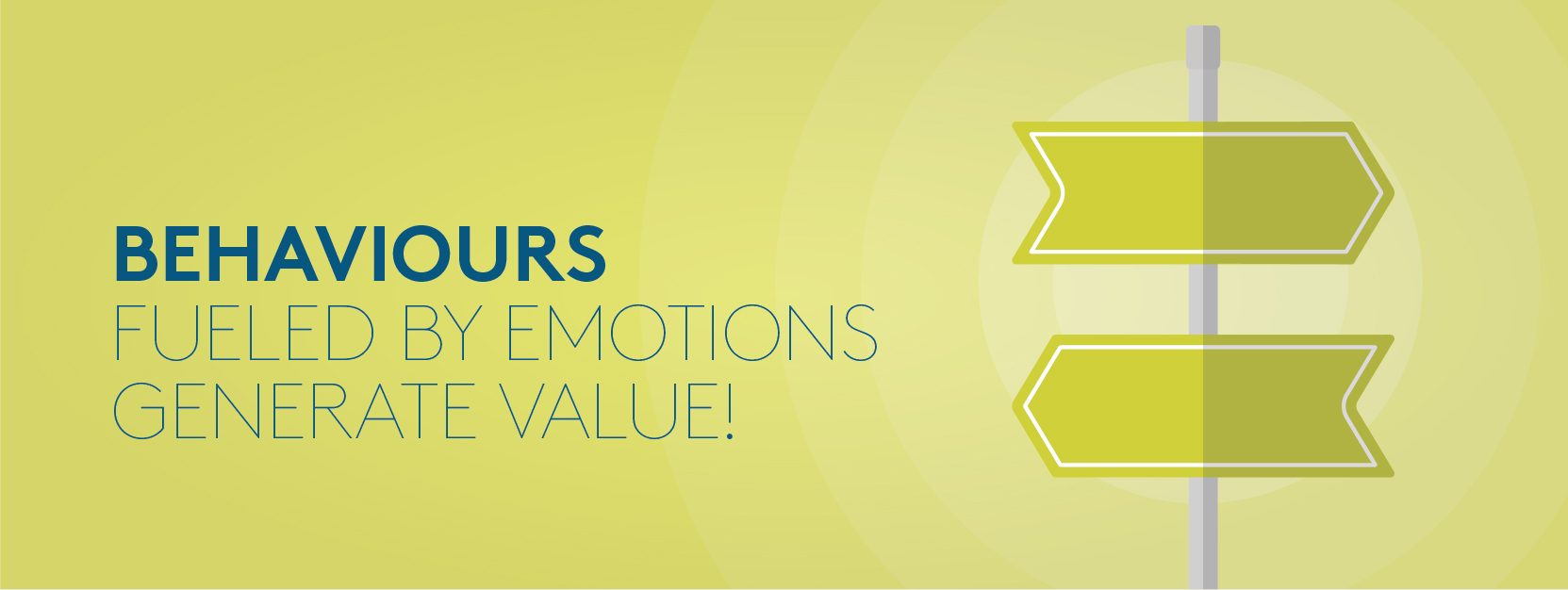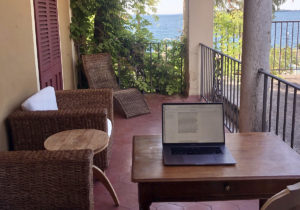Article by Anja Puntari and Roberto Degli Esposti
Emotions play a key role in fueling behaviors that generate organisational value. In this article we explore the connection between emotions and behaviors and how flowknow®, an artwork based methodology, facilitates this process during business Coaching sessions.
What do emotions have to do with business and work in general?
Behaviors, which are fueled by emotions, generate value.
And yet, in business, one of the most common prejudices is that emotions should be left out of the office in the morning, and then picked up again at the end of the workday.
We are Business Coaches and our daily experience tells us this is hardly the case. The moment we walk into a company, an office, or a practice, we experience the emotions that inhabit that space, just as we feel those of the people we meet at work or for work. During our coaching sessions, we certainly perceive plenty of emotions from our Coachees.
David McLelland, in early research on behavioral issues in the 1950’s, gave emotions the most fundamental causal dimension. Daniel Goleman not only introduced this interpretation to a wider audience, but also, showed the connection between the role of emotions and levels of individual and collective performance.
And yet, not even such a high-calibre authors and theory has filtered through into the daily activities of companies and organisations – at least not in the magnitude of the body of knowledge available or books sold on the topic. This is because switching from theory to practice, as always, entails a challenging transition comprising individual and collective behaviors that need to be consolidated over time.
This consideration was the trigger that led us to the creation of an instrument, the toolkit flowknow®, that thanks to the use of metaphors and play, helps to perceive emotions as a structural underpinning of our actions. So here is our attempt: letting emotions in through the window (just for fun) and allowing people, through the dynamics that art stimulates, consciously master this dimension.
Our “tool kit” contains a flowknow® card deck of managerial skills and a deck of flowknow® cards dedicated to emotions and artworks, along with supporting dictionaries. We were happy to present the new tool kit for the first time in a workshop on emotional intelligence at work at Biennale di Venezia in fall 2017 with 80 managers and HR specialist as participants.B
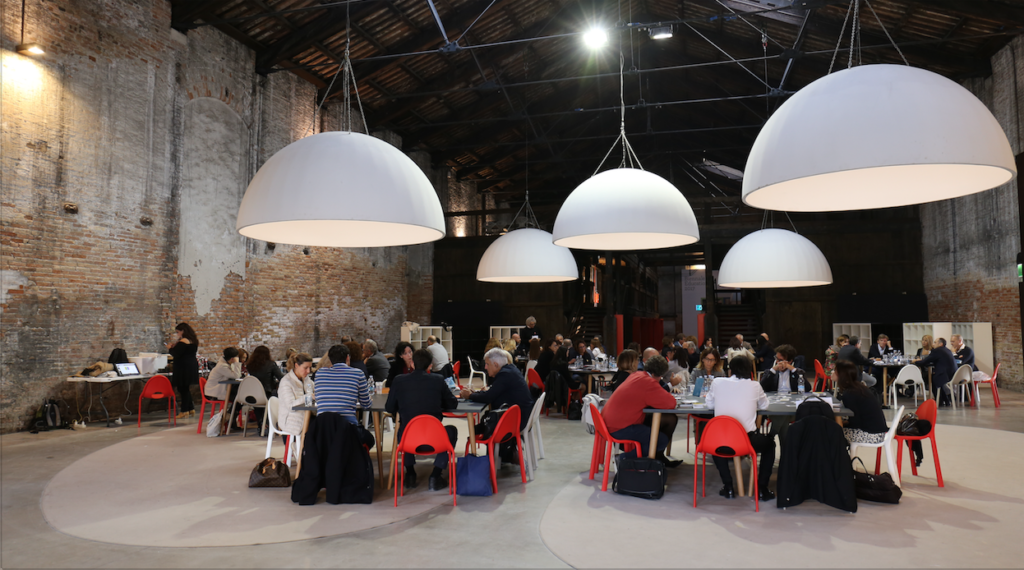
Photo | Workshop Sento dunque posso with the flowknow® coaching cards at Biennale di Venezia, 2017
Emotions as a driving force
The scientific basis of the emotions included in the flowknow cards is that of the behavioural “scopistica” theory. The underlying concept of this school of thought is that emotions have a reason to be, therefore, emotions are useful. For example, the fear we feel in a dangerous situation (or a situation perceived as such) exists to help us avoid getting hurt, the famous flight or flight reaction. In Italy, Cristiano Castelfranchi (CNR – Institute of cognitive sciences and technologies) carried out valid and in-depth research into the “Teoria Scopistica delle Emozioni – Scopistic Theory of Emotions”. This approach radically changes our approach in particular in regard to difficult emotions such as fear, anger or stress, as we start to understand their useful role in our lives. In Coaching this means listening to what the feelings are trying to tell us rather than trying to “shut them up”.
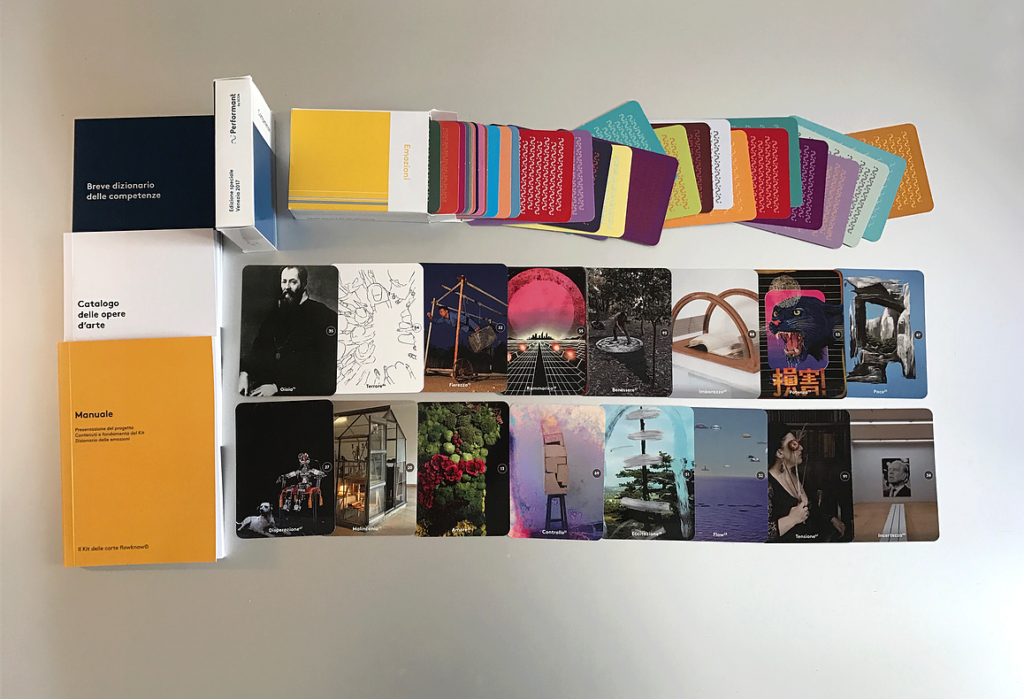
Photo | Content of the flowknow® Coaching tool kit
With the word emotion we intend the psychological and physiological response to an internal or external stimulus. Given the psycho-physical nature of emotions, we believe they can be influenced both by rational thinking and physical activities (sports, breathing practices, the use of metaphors or colors etc.). In fact, a Coach has various ways in which he/she can help the Coachee handle an emotionally complex situation in a constructive way.
The emotional awareness that we attempt to develop when we work with our clients is based on both individual and company “knowledge”. This means:
- the ability to recognize, both in ourselves and in others, the emotions that often drive behavior behind the scenes;
- the ability to give an appropriate name to what is felt, in other words, to be emotionally literate;
- understanding how to welcome, control, manage and direct emotions to use them to one’s benefit, or for the benefit of the company, rather than falling prey to them;
- knowing how to influence and support the achievement of one’s goals, as well as those of the company, relying on the contagious nature of emotions.
After all, even when we pretend emotions don’t have anything to do with us, or that others don’t see them, they are still visible as they show mainly through non-verbal communication, which represents nearly 90% of human communication. As a matter of fact, emotions are clearly visible to others through our eyes (gaze), our body, hand and facial gestures and arrive before the spoken word to people we are in contact with, who are consequently influenced, carried away or even captivated by them.
Therefore, we think that managing emotions constructively is a basic skill to successfully achieving one’s goals, as well as in obtaining business results and creating a work environment in which people feel satisfied and perform well.
If emotions are a driving force, rather than rejecting them, we should begin to live them consciously. We can become stronger thanks to their energy, using them as resources to support those behaviors that help us achieve our goals.
The role of emotions in Business Coaching: the transformation process
Business Coaching is a profession that aims to offer support to individuals and organizations, hence to the process of growth, change and development. It is particularly effective when used to support the most significant phases of corporate evolution.

Based on our experience, when change is imposed in a company, and especially in cases of extreme circumstances such as mergers, acquisitions, restructurings, etc., management is usually adamant about creating a good strategy as well as a solid and practical implementation process. Little attention is paid to the emotional and behavioral aspects of the people: the key players of this transformation.
And yet transformation always comes with recurring emotions that can be recognized, managed and welcomed so as to make the transition successful.
The “Journey of the Hero”, by Joseph Campbell can help us understand the roles of emotions in the various phases of the process. Campbell introduced a universal story structure where the hero represents a character on a path of self-growth. Just like in a play or film, the process is divided into three parts: the first, second and third act, each of them with specific characters. The leading actor and the environment are introduced during the first act. Something unexpected happens that leads to a disruption. In the second act, the protagonist “trains” and learns to live in the new dimension. In the third act, the protagonist faces the ultimate challenge.
This process includes a sequence of recurring emotions. First of all there is the initial desire to change, then comes enthusiasm, frustration, fear and even joy.
If we acknowledge that change is a process that entails living, feeling and managing a number of emotions (at times conflicting), we can navigate the emotional transformation in a more balanced way.
Art and metaphors to see better

“This painting will, perhaps, help you see better” states the work (present on the flowknow® cards) of the Neapolitan-born artist Gabriele di Matteo; an oil on canvas dated 1994, that captures a man in the act of looking.
Seeing is an important topic for us Coaches: “what” helps people to see, “how” do they see and therefore understand themselves and the circumstances in which they find themselves? Coaching is a development path composed of different elements, one of which is to obtain clarity, that is, to better understand one’s own context or one’s own challenge to successfully achieve the desired goal. The metaphor can help us on this path.
Like the Coach with his/her questions, the work of Gabriele di Matteo invites us to contemplate and reflect on the meanings we give to the picture. How do we read it? What interpretation do we make of it? The work of art is a tale where layers of different stories and readings overlap one another, exactly as in the real life we live. Everything that happens to us is a question of interpretation and the metaphor is a means by which to activate the “reading” about us and our context.
The metaphor: a way to speed up, to create, to make emotions emerge
The metaphor carries in the root of the word the distinctive sign of its meaning: it derives from the Greek metaphèro, “I transport”. And it is precisely in transmitting a meaning from one “thing” to another, from a concept to an image, from a logical plane to a figurative one, where we find its profound usefulness both in everyday communication as in a Business Coaching dialog.
The metaphor simplifies and amplifies at the same time. If on the one hand it allows the transfer of complex concepts on an immediate descriptive level, on the other side it brings out the emotional attributes of the story in a more marked and distinctive manner. In this sense it represents a privileged and direct access to the experiential world of the Coachee. He or she is sheltered by the metaphor itself, predisposed to a deeper exploration of his experience, of resistances, of pressures to move forward, actions and reactions that come between him and the objectives he wants to reach.
Often the use of a metaphor is spontaneous. It is consolidated in popular repertoire, defining a sort of metalanguage in which people belonging to the same community or culture understand each other. From the effectiveness of this mode of communication which is already normally in use derives its conscious and targeted use. In this case we decode the message in logical terms. In coaching the direction changes: the Coachee is encouraged to express himself or herself in terms of metaphors and not only verbally.
In fact, the real challenge is to give substance to what, by its nature, is volatile. The material, tactile and visible aspect of the metaphor allows us to treat it as something flexible and therefore transformable. Metaphor and transformation are linked in a circular union whereby, in the apparent superimposition of meanings, we find in one the continuation of the other.
Another apparent duality is constituted by closeness and distance: the metaphor brings us closer to the meaning of our experience, but in the same time it also allows us to take the right emotional distance in order to be able to observe, consider, evaluate and re-evaluate what we are going through. It is through this distance that we can actually think in a “creative” way because we are not so deeply involved. Objects, colors and drawings, for example, allow the construction of a metaphorical representation of reality, both internal and external to the Coachee.
By objectifying the interiority of thought, the Coachee can physically detach himself from it, look at it from new angles, let it settle down like a potion whose elements must dissolve or seperate.
The use of metaphor in Business Coaching
In a protected environment like that of a fantasy, in which nothing can hurt, the Coachee can think, name, imagine in complete freedom, thus penetrating levels of reflection that, both in terms of speed and quality, would not be otherwise accessible.
In Business Coaching, the use of the metaphor can:
- stimulate the Coachee’s creative thinking and thought flow,
- accelerate reflection,
- make a synthesis of the various information at hand,
- perceive numerical quantities better,
- perceive relationships between the subjects involved,
- involve and bring out emotions…
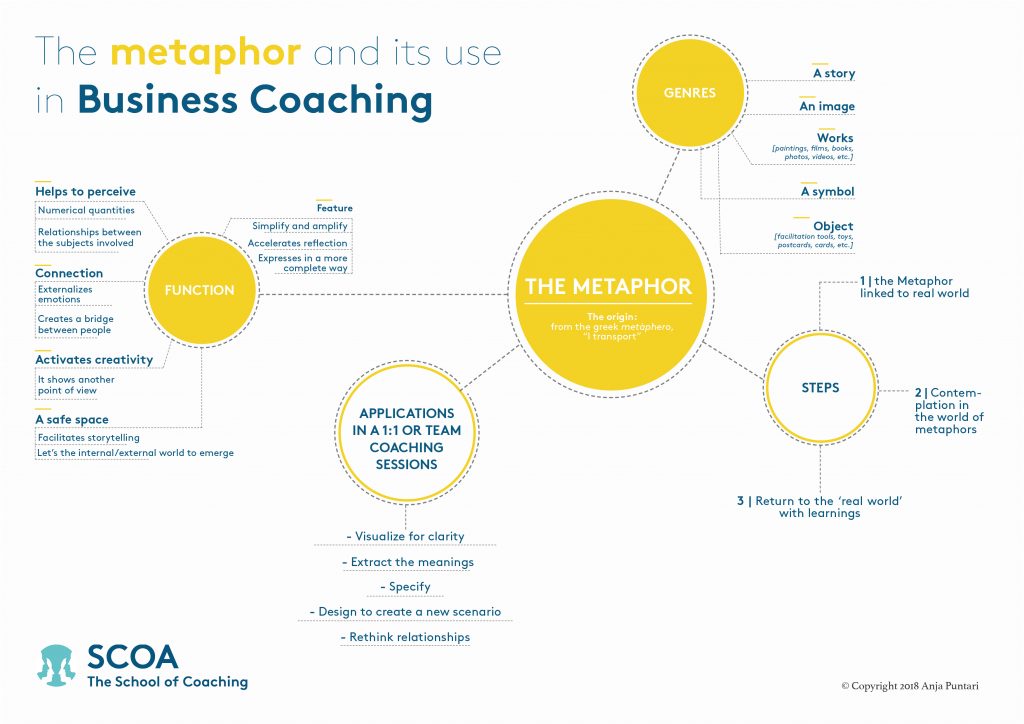
A bit like an artist, the coachee can imagine freely, bypassing constraints, taboos and limiting beliefs and generate his own representation that as such is true because it is true for him or her.
The Coaches role is to be there and welcome the imaginative construct of the Coachee in a state of suspension of judgment.
The metaphor makes it possible to unravel the mass of information that otherwise intertwines with each other, creating in this way clarity of vision. The metaphorical representation is able to extract a synthesis from the often repeated and circular thoughts. The business coach is responsible for accompanying the Coachee to identify and specify meanings and relationships, and to reflect on how it would be possible to transform them.
A path, therefore, that goes from the real to the metaphorical through the contemplation of the metaphor itself, to then return to the reality with new learnings in order to better face the challenge of the moment.
From art to business, from business to art
Our daily Business Coaching experience led us to create the flowknow® toolkit.
If, by using these cards on the one hand we bring new knowledge from the world of contemporary art to business, on the other hand, our experience has shown us how the reasoning of contemporary artists and the entrepreneurial mind set are very similar in many different ways. To conclude, we shall mention just a few by way of example.
Finding an original, distinctive, recognizable and recognised message (one that allows the individual to appreciate a concept, idea or vision of things) is the basis of both an artistic production and a business idea.
The aptitude and ability to get a head start, as well as to create new physical or virtual spaces through the creation of artworks or products that anticipate a feeling (as of yet unexpressed) of an audience is another common element.
Artists and entrepreneurs both use in their actions and emotions as a support in order to create value. They both are aware of this and work to achieve the state of flow.
In this sense they allow both the left side of the brain (the rational and logical part) and the right side (the creative and emotional part) to guide them. They analyse, ponder, calculate… of course – but they also trust their own instincts. They follow their own vision, enchanted by a dream and the conviction (often seemingly irrational) that corresponds to a company coming into being for an entrepreneur and a work of art for an artist.
This approach often in our experience lacks from the managerial mind.
Knowing oneself and the world through the completeness of the flow, as well as combining behaviours and emotions while being fully part of it are the real objectives of this work: this is what we hope everyone who decides to use the flowknow® cards will achieve. Safe travels, wherever the flow takes you.
Milan, April 2019
Anja Puntari and Roberto Degli Esposti

